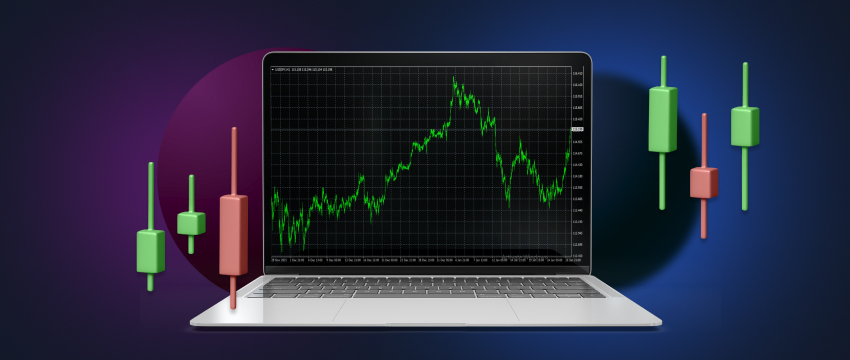High-frequency trading (HFT) is algorithmic trading executed at lightning speed. Traders use specialized computers to make numerous transactions within a very short investment horizon, often in milliseconds.
HFT uses high-frequency financial data and electronic tools. Proprietary trading strategies, carried out by computers, enable traders to move in and out of positions in seconds or fractions of a second. Large investment banks and hedge funds predominantly use HFT, a complex type of trading.
HFT is particularly complex because it combines two already complicated fields: high-frequency finance and computer science.
For example, given the fact that most finance-trained people don’t understand computer programming and most computer scientists lack the knowledge to grasp highly academic finance, HFT is very often a misunderstood and under-researched area, according to Irene Aldridge’s High-Frequency Trading: A Practical Guide to Algorithmic Strategies and Trading Systems (2013).

High-Frequency Trading (HFT) and its impact on markets
High-Frequency Trading has gained significant attention in recent years. It has contributed to operational improvements in the markets. These improvements have led to lower volatility, higher stability, better transparency, and lower execution costs for traders and investors.
The use of fully automated HFT has also generated profitability for trading desks as it saved costs by replacing expensive trader head count with less expensive trading algorithms and advanced computer technology.
As computer technology advanced and prices dropped, experts anticipated that high-frequency systems would become more dominant.
High-Frequency Trading (HFT), systematic, electronic and algorithmic trading systems differences
Traders should not confuse HFT with electronic trading, algorithmic trading, or systematic trading. The latter refers to computer-driven trading decisions held for a month, day or minute, and therefore are not high-frequency.
Electronic trading refers to the ability to transmit orders electronically. Since computers transmit most orders, the term has become obsolete.
Algorithmic trading is more complex and can refer to various algorithms relating to order-execution processes and high-frequency portfolio allocation decisions.
What makes HFT stand out is its short position holding times. These positions last one day or less, usually without being held overnight.
The rapid execution speed makes most HFT systems systematic and they are also examples of algorithmic and systematic trading. However, not all systematic and algorithmic trading platforms are high frequency.
Definition of High-Frequency Trading (HFT)
Based on research, HFT traders are those who generate high market volume and hold low inventory.
We can also categorize High-Frequency Trading as trading that human market participants cannot attain. For example, we would consider an account that generates 200 orders per second as HFT because humans cannot achieve this.

How does High-Frequency Trading (HFT) work?
High-frequency trading employs sophisticated algorithms that examine individual stocks in milliseconds to identify new trends.
If the analysis identifies a trigger, the system will send out hundreds of buy orders in a matter of seconds.
High-frequency trading pros
In addition to trading a lot of securities, high-frequency trading enables traders to profit from even the smallest price changes. It enables organisations to profit greatly from bid-ask spreads.
Trading algorithms can scan multiple markets and exchanges. This allows traders to find additional opportunities, such as capitalizing on small price variations for the same asset across exchanges.
Arguments for improved market liquidity
High-frequency traders contend that their practices improve market liquidity.
Since HFT executes trades more quickly and increases the volume of trades dramatically, it undoubtedly increases market competition. The markets become more price-efficient as a result of the decreased bid-ask spreads brought on by the increased liquidity.
Lower risk in liquid markets
Traders view a liquid market as having less risk because someone is always on the other side of a position. Additionally, the price a buyer is willing to pay and the price a seller is willing to sell for will get closer together as liquidity rises.
Risk management with stop-loss orders
Traders use a stop-loss order to reduce risk. It ensures a position closes at a specific price, limiting further losses.
المزايا:
Regulators, financial experts, and academics still disagree on high-frequency trading, which remains a contentious practice.
Short holding periods and minimal capital
High-frequency traders rarely keep their holdings overnight, build up very little capital, and hold their positions for a brief period of time before selling them.
Abnormally high sharpe ratios
The Sharpe Ratio, or risk-reward ratio, is consequently abnormally high. Compared to the traditional investor who employs a long-term strategy, the ratio is significantly higher.
In addition to increasing the likelihood of a sizable loss, a high-frequency trader may occasionally only make a fraction of a cent, which is all they need to make gains throughout the day.
The “ghost liquidity” argument
The claim that HFT merely produces “ghost liquidity” in the market is one of its main criticisms. Opponents of HFT point out that the liquidity created is not “real” because traders only hold the securities for a short period of time.
High-frequency traders have already traded the security several times before the average investor can purchase it. The enormous liquidity generated by High-Frequency Trading has mostly subsided by the time the average investor places an order.
Additionally, many believe that high-frequency traders or big financial institutions frequently make money off smaller market participants, such as individual investors or smaller financial institutions.
Association with market volatility and crashes
Last but not least, people have connected HFT to both market crashes and heightened market volatility.
Regulators have caught some high-frequency traders using illegal market manipulation techniques like layering and spoofing.
Investigations have established that HFT played a significant role in the extreme market volatility during the 2010 Flash Crash.
Market Impact
High-frequency trading is criticised by some experts who feel that it unfairly favours big businesses and tilts the playing field. It can also hurt other investors who buy or sell in bulk and have a long-term strategy.
Additionally, critics contend that market volatility is influenced by new technologies and electronic trading that began in the early 2000s.
These technologies have the potential to magnify both minor and major crashes by mass liquidating their portfolios in response to particular market cues.
In an effort to reduce volatility and avert unfavourable incidents like the Knight Capital collapse and the US Flash Crash of 2010, some European nations seek to outlaw high-frequency trading.
Additionally, algorithms can be developed to place thousands of orders and then cancel them seconds later, temporarily raising the price. It is generally regarded as unethical and occasionally unlawful to take advantage of this kind of deception.

T4Trade: Exploring the markets with a trusted broker
If you are a trader, you know how important it is to have a thorough education in trading along with the right tools and resources to help you stay on track and improve your skills.
For traders of all skill levels and abilities, T4Trade provides individualised instruction that lets them grow and learn at their own speed.
Fast execution, الرافعة المالية المرنة, and free and quick withdrawals and deposits allow traders to focus on their strategy while enjoying great trading conditions with a regulated and trustworthy broker.
Additionally, you can reach our helpful support staff by phone, email, or live chat around-the-clock if you have any questions. Additionally, T4Trade offers you access to unique resources that will help you hone your abilities and become a skilled trader by offering perceptive commentary from our podcasters, webinar presenters, and experienced traders.
Through free webinars, and in-depth articles that you can read whenever you have time, our knowledgeable analysts can offer comments and analysis. An economic calendar is also available to monitor financial activities and indicators.
إخلاء المسؤولية: هذه المواد مخصصة للأغراض الإعلامية والتعليمية العامة فقط ولا ينبغي اعتبارها نصيحة استثمارية أو توصية استثمارية. T4Trade ليست مسؤولة عن أي بيانات مقدمة من أطراف ثالثة مشار إليها أو مرتبطة برابط في هذا الاتصال.




